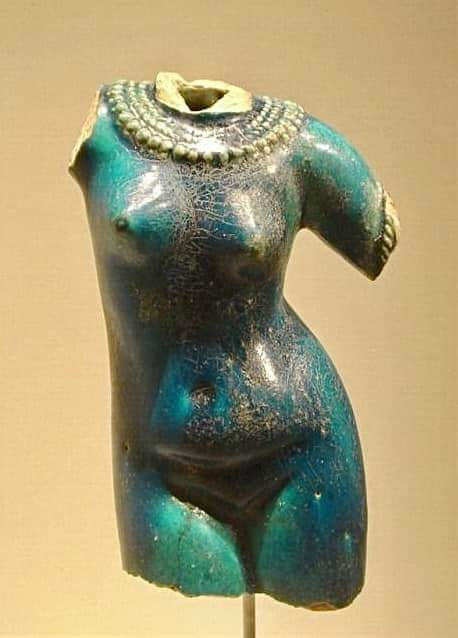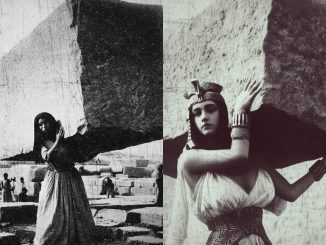In the world of ancient art, few pieces captivate the imagination quite like the Torso of the Goddess Venus Anadyomene, also known as Venus Rising From the Sea. This exquisite sculpture, dating back to the Graeco-Roman period between 30 BC and 300 AD, offers a tantalizing glimpse into the artistic prowess and cultural fusion of the time. Crafted from faience and adorned with Egyptian blue, this masterpiece stands as a testament to the intersection of classical Greek and Roman mythology with the rich symbolism of ancient Egypt.

Origins and Discovery
The story of the Torso of Venus Anadyomene begins with its discovery in the sands of Egypt, a land steeped in history and mystery. Scholars believe that the sculpture originated in Alexandria, a thriving hub of culture and trade during the Graeco-Roman period. Its precise origins remain shrouded in speculation, adding an air of intrigue to its already enigmatic presence.
Discovered among the ruins of ancient temples and palaces, the Torso of Venus Anadyomene emerged from the depths of time to offer modern-day archaeologists a rare glimpse into the artistic sensibilities of the ancient world. Its journey from the sands of Egypt to the hallowed halls of museums is a testament to the enduring legacy of classical art and the tireless efforts of those dedicated to its preservation.
Symbolism and Meaning
At the heart of the Torso of Venus Anadyomene lies a profound symbolism that transcends the boundaries of time and culture. Depicting the goddess Venus emerging from the sea, her form bathed in celestial light, the sculpture embodies themes of rebirth, beauty, and divine grace.
In classical mythology, Venus, known as Aphrodite to the Greeks, was born from the sea foam, a miraculous event symbolizing the eternal cycle of creation and renewal. The sculptor masterfully captures this moment of emergence, freezing it in time for eternity. With each delicate curve and graceful contour, the Torso of Venus Anadyomene invites viewers to contemplate the timeless allure of feminine beauty and the inexorable power of nature.
Artistic Technique and Craftsmanship
One cannot discuss the Torso of Venus Anadyomene without marveling at the skill and ingenuity of its creator. Crafted from faience, a type of glazed ceramic, and adorned with Egyptian blue pigment, the sculpture showcases the artistic fusion that defined the Graeco-Roman period.
The use of faience, a material revered by ancient Egyptians for its lustrous finish and vibrant colors, speaks to the cultural exchange that flourished in Alexandria and beyond. By incorporating Egyptian techniques and aesthetics into a classical motif, the sculptor elevates the Torso of Venus Anadyomene to a work of transcendent beauty.
Legacy and Influence
Over the centuries, the Torso of Venus Anadyomene has inspired countless artists, poets, and scholars with its timeless allure. From the Renaissance masters who sought to capture its ethereal beauty on canvas to modern-day admirers who marvel at its exquisite craftsmanship, the sculpture continues to leave an indelible mark on the world of art and culture.
As we gaze upon the Torso of Venus Anadyomene, we are reminded of the enduring power of ancient art to transcend the boundaries of time and space. In its graceful curves and divine presence, we find a connection to the distant past and a source of inspiration for generations to come.
In the annals of art history, the Torso of Venus Anadyomene stands as a testament to the enduring legacy of the Graeco-Roman period and the timeless allure of classical mythology. From its enigmatic origins in ancient Egypt to its modern-day prominence in museums and galleries around the world, this exquisite sculpture continues to captivate the imagination and inspire wonder in all who behold it. As we ponder its meaning and marvel at its beauty, we are reminded of the profound impact that art can have on the human spirit, transcending the boundaries of time and culture to speak to the eternal truths that unite us all.


